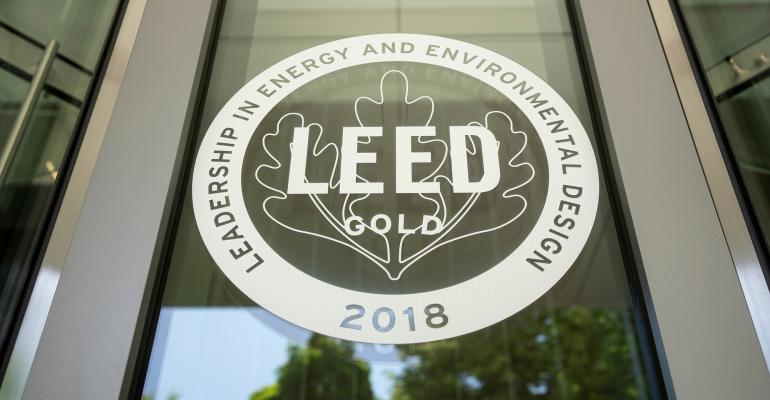There are a number of reasons that major office investors have been implementing Environmental, Social and Governance (ESG) policies and Leadership in Energy and Environmental Design (LEED) certifications into their investment criteria. These include government mandates, good PR and genuine concern about the planet. Most importantly, however, it’s good for the bottom line.
“Most investors that raise capital from pension funds and endowments have ESG policies because their investors are demanding it,” says Fort Worth, Texas-based Russell Ingrum, vice chairman of capital markets with commercial real estate services firm CBRE. Ingram notes that the focus on the environment has become dominant in the development community because the office tenants want it or the equity investors in the projects require it. Most major U.S. corporate tenants are seeking sustainable real estate, with energy companies leading this trend, he says. So it’s become prominent anywhere there are a lot of Fortune 500 company offices, which is in most major U.S. markets.
A study by commercial real estate services firm Cushman & Wakefield that analyzed the impact of LEED certification on office buildings found that they lease up faster, generate a rent premium and trade at higher values compared to non-certified office buildings in the same class.
Since 2015 rents for LEED- certified office buildings have averaged $4.13 per sq. ft. more or 11.1 percent higher than rents for than non-LEED certified buildings, Cushman & Wakefield found. LEED-certified assets outperform during recession recovery periods, outpacing RevPAF growth of non-LEED assets by at least 49 percentage points during both the Global Financial Crisis of 2008-2009 and COVID-19 periods. These assets tended to have lower vacancy levels than their non-LEED counterparts in the wake of the COVID-19 pandemic. Since the onset of the pandemic, these buildings saw accelerated tenant demand and increased occupancy by 92 percent, while occupancy at non-LEED-certified buildings fell 88 percent.
In addition, LEED-certified office buildings achieve significant valuation premiums over non-certified assets. For example, sales of LEED-certified class-A urban office buildings generated a 25.3 percent price per sq. ft. price premium over non-certified buildings, while LEED-certified class-A suburban building saw a premium of 40.9 percent.
LEED certification also compresses cap rates relative to non-certified office assets by 40 to 80 basis points, according to Cushman & Wakefield data. What’s more, since the start of the pandemic, the spread premium for LEED-certified office properties in both gateway and secondary markets has noticeably increased.
According to CBRE’s Ingrum, if both a certified and a non-certified building are leased to credit tenants, investors are less willing to pay a premium for LEED certification. Overall, however, he agrees demand for environmentally sustainable buildings is stronger than for non-certified assets.
“While we are not currently seeing measurable premiums on pricing to acquire LEED-certified assets, ESG criteria becomes more heavily weighted in decision-making, and it is highly likely that there will be discernable premiums paid for ‘green’ assets (going forward),” notes Mark Godfrey, head of institutional valuations with CBRE.
For example, CalSTRS, the California teachers pension fund, incorporates ESG considerations into its risk analysis for its real estate investment decisions and ownership policies and practices since it is a long-term investor and may hold an asset for many decades.
“This is top of mind for institutional investors as they consider which office buildings will compete for top tenants over the long term,” says Alan Pontius, senior vice president and national director of office, industrial and healthcare divisions at real estate services firm Marcus & Millichap. “Most pension fund advisors and REITs can be expected to pursue acquisitions that are meeting these criteria.
What’s more, as goals for achieving carbon-neutral status come into view, many office buildings will fall of the list of potential investments unless the owners undertake a retrofit strategy, Pontius adds. This trend is being driven by tenant demand and the rapid evolution of real estate funds’ investment criteria.
Institutional investors also are leading the charge in factoring environmental sustainability criteria into their new developments, notes Godfrey. Canada-based investment firm Ivanhoe Cambridge, for example, is improving the efficiency and resilience of its real estate assets with the goal of achieving net-zero carbon across its portfolio by 2040.
The Cushman & Wakefield study noted that aiming for LEED certification adds 7.43 to 9.43 percent to construction costs. It is extremely difficult to build new buildings in a carbon neutral manner due to the heavy carbon load in manufacturing steel and concrete, according to Ingrum, who notes that it much easier to retrofit existing assets to meet sustainable standards.





